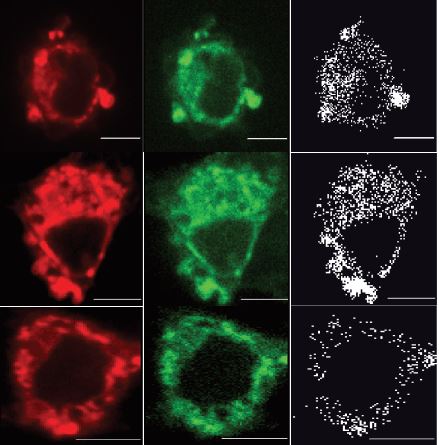Dicodon monitoring of protein synthesis (DiCoMPS) reveals levels of synthesis of a viral protein in single cells

Abstract:
The current report represents a further advancement of our previously reported technology termed Fluorescent transfer RNA (tRNA) for Translation Monitoring (FtTM), for monitoring of active global protein synthesis sites in single live cells. FtTM measures Förster resonance energy transfer (FRET) signals, generated when fluorescent tRNAs (fl-tRNAs), separately labeled as a FRET pair, occupy adjacent sites on the ribosome. The current technology, termed DiCodon Monitoring of Protein Synthesis (DiCoMPS), was developed for monitoring active synthesis of a specific protein. In DiCoMPS, specific fl-tRNA pair combinations are selected for transfection, based on the degree of enrichment of a dicodon sequence to which they bind in the mRNA of interest, relative to the background transcriptome of the cell in which the assay is performed. In this study, we used cells infected with the Epizootic Hemorrhagic Disease Virus 2-Ibaraki and measured, through DiCoMPS, the synthesis of the viral non-structural protein 3 (NS3), which is enriched in the AUA:AUA dicodon. fl-tRNA(Ile)UAU-generated FRET signals were specifically enhanced in infected cells, increased in the course of infection and were diminished on siRNA-mediated knockdown of NS3. Our results establish an experimental approach for the single-cell measurement of the levels of synthesis of a specific viral protein.